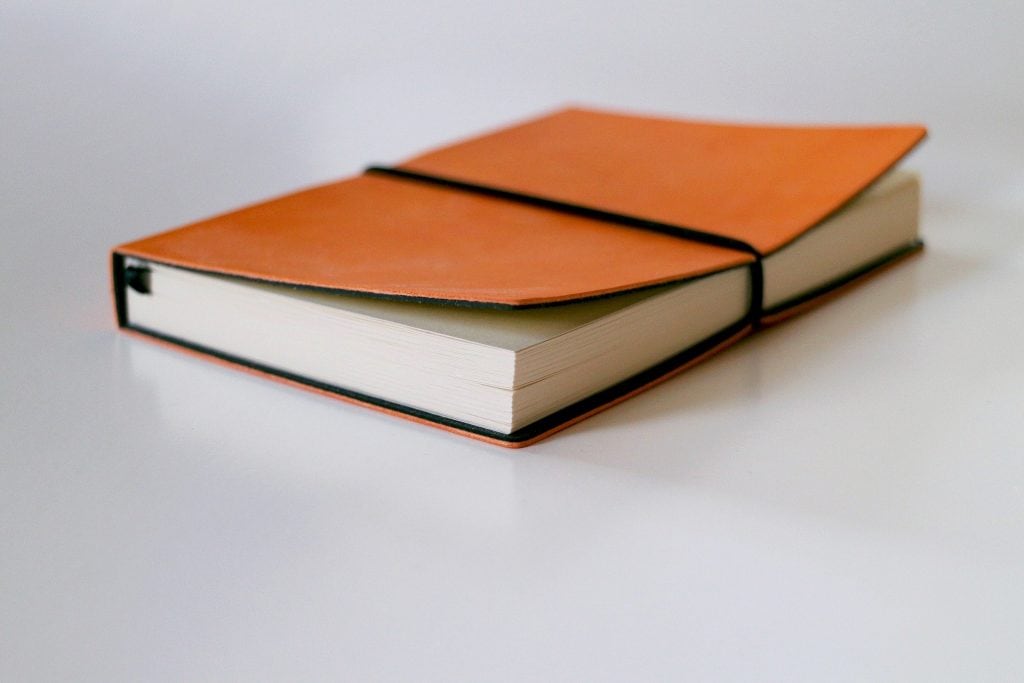Are you a student preparing for APUSH, or AP World History, or AP European History, who hasn’t quite mastered the art of writing the DBQ essay? Don’t worry — it’s a reasonably complex essay, but when broken down into steps, easy to figure out.
Read on for DBQ essay tips: how to annotate the documents, draft your DBQ essay outline, craft your DBQ thesis and argument, write the DBQ, and revise your essay. Included are DBQ examples from the 2018 AP U.S. History exam.
First Things First: What is a DBQ Essay?
A DBQ, or Document Based Question, is an essay question present on many of the history-based AP Exams, including AP U.S. History, AP European History, and AP World History.
The DBQ is one somewhat specific prompt about a historical context, and it includes six documents (either primary text excerpts, art pieces, political cartoons, or other types of archival media).
The goal of the DBQ is to write an essay arguing your specific stance on the question and to support your position with both a selection of the documents and other knowledge of historical events.
You’ll have to provide historical context for the prompt and demonstrate how some factor of each document supports your argument. You’ll also need a firm conclusion that restates your thesis and analysis.
The DBQ will be worth 25% of your score, so it’s essential to do well.
How to Outline a DBQ Essay (with Examples)
After you read the prompt, look through the packet of documents and take a second to analyze each in conjunction with the prompt. Does the message of the document seem to support or refute the prompt?
Jot down a few keywords about the historical context of the document — is it from a specific historical event or written by a member of a prominent historical movement? If so, make sure to reference that in your essay.
Also, note whether you can easily use the document to support the prompt.
Make sure to manage your time here — if you’re stuck on a document, just skip it. Don’t waste time trying to figure out something you may not even need in your essay. Don’t make detailed notes either — only one or two keywords you can reference later in your essay.
After you’ve looked at every document, you can determine your argument and your thesis. Are there enough documents that you can easily support the prompt statement? Pick three key points to use in your thesis, with one or two documents for each.
Your outline should not be long or detailed because the last thing you want to do is waste time. All you need is 5 points, one for each paragraph: intro, thesis points 1-3, conclusion (which is just restating the thesis).
For each point, write down the main idea of the paragraph, summed up into two or three words, any historical buzzwords you plan to use, and the documents you plan to reference. That should provide enough of a skeleton to get you writing.
Here’s an example, from the 2018 AP U.S. History exam DBQ, released by The College Board. The prompt is as follows:
For the outline, look at the documents and devise a thesis. In this case, the writer can group the documents by topic: 2 documents about the importance of a strong foreign presence, two documents warning about federal expansion, and two documents lamenting a divergence from social traditionalism. This means you might want to consider making those three categories your thesis points.
Then, figure out how to make an argument and answer the prompt.
Also, consider the historical context of the time.
Example outline (2018 question):
Contextualization: Post Civil War South in shambles, expansion of industrialization, favorable tariffs, prior isolationism halted in seeking new markets.
Thesis: Imperialism — attitudes of American superiority, foreign conflicts leading to territory gains/opportunities (Manifest Destiny idea), but also backlash to imperialism.
1. Attitudes of American superiority
- If Anglo-Saxon Americans that if they don’t compete in global affairs, other nations and races will. (Doc 2)
- A strong navy/military is necessary to defend superior American interests (Doc 3)
- America as a country can take whatever territories it desires (Doc 4)
- Attitude that America should not only use military power abroad but also indoctrinate people into American culture and education abroad (Doc 6)
- Efforts to oppose America unsuccessful (ie in the Philippines)
2. Foreign conflicts and territory gains
- US’s purchase of Alaska from Russia (Doc 1)
- Teddy Roosevelt & the importance of foreign affairs (Doc 7)
Conclusion: These attitudes of American superiority continue into the 20th century.
Your outline doesn’t need to be detailed, just provide a roadmap for you to reference as you’re writing your essay, so you don’t lose the focus of your argument.
What Makes an Effective Thesis?
Start drafting your thesis by looking at the prompt and the documents in conjunction. Make sure you can support your thesis with some of the documents. Otherwise, you’ll struggle to back it up.
Figure out what the prompt is asking: College Board tends to use an “action word” in the prompt, each one asking a slightly different thing. Underline the verb — what the prompt wants you to do. Examples:
- Analyze, Discuss, Consider: Write about the causes and mechanizations of the prompt: basically how and why something occurred the way it did historically. Use evidence (the documents) to back up your claims.
- Assess: Generally, in reference to a statement. Write about how historically defensible, or accurate the statement is. You can take any stance, but whichever one you choose needs to be backed up by evidence (the documents).
- Evaluate: Determine which cause, or historical factor, proved most influential in the way a past event or movement played out. You can discuss several factors or causes, and figure out the extent to which each impacted the historical event, back up your evaluation with evidence.
- Compare/Contrast: Identify key historical characteristics (social, political, economic) of the two movements/events/etc. listed in the prompt, and then draw comparisons between them and point out their differences. For your three-point essay, choose either two to be similarities and one to be a difference or two to be differences and one to be a similarity, depending on what you have evidence for/documents to back up.
- Explain: Provide lots of detail about the causes or contributing factors to the historical event/movement/etc. listed in the prompt. Look at the social, political, and economic factors, and back up your explanation with the documents and other outside evidence.
Make sure your thesis answers the prompt, but moreover, makes a historically defensible claim that can be supported by the documents. You can then develop your thesis points using the context of the documents.
Your thesis also functions as a sort of roadmap for where your paper will go. Include your thesis points in an order that will make sense in your essay, especially if they build on each other.
Your thesis only has to be one to three sentences. Don’t start writing your body paragraph while still in your thesis statement — save all the evidence for later in your paper.
Here’s an introduction and thesis paragraph scoring full points, released by the College Board from the 2018 AP U.S. History exam. The first part of the paragraph functions as contextualization, and it introduces the period, setting up the prompt.
The next part is the thesis:
The United States primarily sought to increase its role in the world due to the notion that America and the American lifestyle was superior and to also gain strategic territory to expand their influence globally. Despite these strong imperialist sentiments, however, there were still many who were against the movement and considered it a moral wrongdoing.
The student takes a clear stance here: The US deliberately sought to increase their role in global affairs, and a rhetoric of American superiority and the quest to gain more territory together caused this increase.
- The general assumption of American superiority
- The government gaining strategic territory for global affairs
- Pushback to imperialism
How to Develop a DBQ Argument
Again, develop your argument by looking at the documents. What about the goal or message of each document supports your argument? What does each document say about its historical period? Ask these questions and jot down some other buzzwords from the time period you could reference to support your argument.
You can put the documents into categories depending on what they’re saying — then you can use these categories to develop your thesis points, which back up your argument.
In the case of the 2018 DBQ referenced above, the student grouped their documents by body paragraphs.
For their first thesis point, the general assumption of American superiority,
- A document telling Anglo-Saxon Americans that if they don’t compete in global affairs, other nations and races will.
- A document stating the importance of a strong navy to defend American interests
- A cartoon portraying America as a country in a position to take whatever territories it desires
- A document suggesting America should not only use military power abroad but also indoctrinate people into American culture and education abroad.
Together, they used these documents to demonstrate attitudes both political and social driving American imperialism, and how the rhetoric of American superiority pushed the US to imperialism and into global affairs.
For their second thesis point, gaining strategic territory for global affairs
- A document about the US’s purchase of Alaska from Russia
- A document from Teddy Roosevelt about the importance of foreign affairs.
These demonstrated how the US’s direct intervention in foreign affairs could get them more territory and power — which increased the US’s global influence.
Since their third thesis point wasn’t a cause, more of a qualifying point, the student didn’t use any of the documents.
By grouping documents together based on their message, it’s easier to develop supportable thesis points. However, if you can think of several thesis points after reading the prompt, you can also jot them down and then see what documents fit under each.
What to Look for When Analyzing the DBQ Documents
You should contextualize/analyze at least three documents in your essay. Here are some options to analyze. For the examples, we’ll use document 3 from the same 2018 DBQ. For each example, sample notes and a sample essay analysis sentence are included. Remember, you only have to analyze one characteristic of each document for your essay.
Source: Captain Alfred Thayer Mahan, The Interest of America in Sea Power, Present and Future, 1897.
To affirm the importance of distant markets, and the relation to them of our own immense powers of production, implies logically the recognition of the link that joins the products and the markets, that is, the carrying trade; the three together constituting that chain of maritime power to which Great Britain owes her wealth and greatness. Further, is it too much to say that, as two of these links, the shipping and the markets, are exterior to our own borders, the acknowledgement of them carries with it a view of the relations of the United States to the world radically distinct from the simple idea of self-sufficingness? … There will dawn the realization of America’s unique position, facing the older worlds of the East and West, her shores washed by the oceans which touch the one or the other, but which are common to her alone.
Despite a certain great original superiority conferred by our geographical nearness and immense resources, due, in other words, to our natural advantages, and not to our intelligent preparation, the United States is woefully unready, not only in fact but in purpose, to assert in the Caribbean and Central America a weight of influence proportioned to the extent of her interests. We have not the navy, and, what is worse, we are not willing to have the navy, that will weigh hersiously in any disputes with those nations whose interests will conflict there will or our own. We have not, and we are not anxious to provide, the defence of the seaboard which will leave the navy free for its work at sea. We have not, but many other powers have, positions, either within or on the borders of the Caribbean.
1. Author’s point of view
Was the author a member of a political party opposed to specific issues, or an activist leading a prominent social movement? Identify their outlook on the document.
Notes to take: 2018 example: importance of navy, military strength for imperialism
Analysis: 2018 example: The author, like some military leaders at the time, advocated for the strengthening of domestic fortification and the enlargement of the navy to extend America’s influence abroad.
2. The intended audience
Is the document a news article from a major newspaper? An excerpt from a political pamphlet? A diary entry? Ask yourself who would have read the document — this will help you identify the author’s intended message.
Notes to take: 2018 example: Military interests abroad
Analysis: 2018 example: The intended audience was military leaders interested in hearing how better to increase the US’s influence abroad and fortify the country domestically.
3. The message or purpose of the document
Was the document’s purpose to inform readers objectively? Was it to persuade them to join a political movement? Or to entertain them? Identifying the purpose can help you better understand the document, and use the document to strengthen your argument.
Notes to take: 2018 example: fortify the navy, influence military/political leaders
Analysis: 2018 example: The author attempted to influence United States political leaders to enlarge the United States Navy to extend its reach into Central America and the Far East
4. Historical influences on the document
Did a specific historical event motivate the author to create the document? Did the actions of other scholars, activists, or politicians noticeably inspire the author? This one might not be easy, but if you know about other historical movements or figures during the same or an earlier time period with a similar message, they might be related. Take note.
Notes to take: 2018 example: Federal expansion, desegregation, civil rights movt
Analysis: 2018 example: European endeavors in Latin America and in the Far East increased the need for the United States to extend its reach into the region to protect its growing economic interests.
3 Strategies to Use When Drafting Your DBQ
1. Be familiar with the rubric, and follow it.
The DBQ rubric is as follows:
Thesis: 1 point. Must answer the prompt with a historically defensible claim.
Contextualization: 1 point. Contextualization can be part of your introduction paragraph. Introduce the broader historical context of the time period — what, outside the specific events of the prompt, influenced public attitudes or policy during the time period? How might these other factors have influenced the events of the prompt?
Evidence: 3 points. Using at least 3 of the documents to address the prompt and strengthen your argument is 1 point. Using at least 6 of the documents to address the prompt and reinforce your argument will get you 2 points. Using outside evidence not discussed in any of the documents from your historical knowledge will get you 1 point.
If you use six documents and some outside evidence, you’ll get the full 3 points.
Analysis and reasoning: 2 points. One point if, for at least 3 of the documents, you analyze the author’s point of view, purpose, audience, or historical influences in reference to the prompt and support your argument. Explain why the author’s purpose, or audience, etc. is relevant to your case to get this point.
For the second point, you have to use evidence to demonstrate a sophisticated knowledge of the topic of the prompt. Does your argument answer the question in a way that’s supported with both the documents and other evidence? Does your writing show that you know what you’re talking about?
If you’ve reviewed the rubric ahead of time, make sure to mentally check off boxes as you go through and write. You could potentially miss something small (ie, only integrating five documents, or forgetting to reference outside evidence) and lose a whole point.
2. Use the documents as a guide.
Since you have to include at least six documents in your essay for the full 2 points, you should make sure they can fit into your thesis points and support your argument. When you’re stuck writing one of your body paragraphs, reference a document and analyze how it reflects historical attitudes at the time.
You should also add in the documents you plan to reference in your outline, so if you follow your outline, you can let the documents and other outside evidence guide your writing.
However, also remember to bring in at least one piece of outside historical knowledge — treat that as another document and analyze it to support your argument.
3. Use your historical knowledge to supplement the documents.
Bring in your knowledge beyond the documents and their contexts. Is one of the documents from a suffragette in the 19th century? Bring in some of the other knowledge you have about the early feminist movement and the push for women’s voting rights. Add in critical buzzwords the documents may not have directly stated, and talk about similar events and movements at the time that may have affected or been affected by the document.
You can also reference historical events, movements, or people not discussed in any of the documents at all, assuming they support your argument, to strengthen your essay outside the scope of the documents.
How to Conclude Your DBQ Essay
In the updated 2017 DBQ, you don’t need to write a synthesis paragraph. So conclude your DBQ essay by reiterating the main analysis points of your body paragraph briefly, and restate your thesis. Together, this will distill your essay down to its main points for a clear, strong conclusion.
Don’t add any new material — all your analysis should be in your body paragraphs, and anything more will just confuse your reader.
How to Revise Your DBQ Essay Effectively
If you have time before the end of the writing period and you’ve finished writing your DBQ, go back and revise it. Read through everything again, paying close attention to the following.
Contextualization:
- Have you successfully “set the scene” by describing some of the relevant historical context of the time period, including other prominent social movements, policies and legislation, economic market changes, or religious movements?
Thesis:
- Are your three original thesis points used as the foundation for your three body paragraphs? If not, change your thesis to make sure it lines up with the rest of your essay.
- Does your thesis take a stance and make a historically defensible claim? Read it over in conjunction with the prompt and make sure it’s answering the entirety of the question and not just restating the prompt.
Body Paragraphs:
- Do you use two or more documents per body paragraph for a total of 6 or more documents total? If not, look over which documents you haven’t used and integrate them into one of your body paragraphs.
- Each time you use a document, do you effectively contextualize it? Do you discuss how the author’s purpose, intended audience, point of view, or historical influences support your argument? If not, add that.
- Is your argument logically supported by each piece of evidence you offer?
- Do you have at least one piece of evidence outside of the documents that supports your argument?
- Does each body paragraph flow logically into the next? Make sure your transitions are smooth.
General Time Management Tips When Writing DBQs
You only have a limited amount of time for the entire essay, so manage your time intelligently. I wouldn’t recommend spending more than 10, 15 minutes max thinking about your argument and drafting an outline.
During the AP exam, they’ll give you a specific time period of 15 minutes to spend reading the documents and thinking about your argument, then 45 minutes to write the essay.
But 45 minutes isn’t a ton of time, use the 15 minutes intelligently, so you’re ready to start writing as soon as possible. You want the maximum possible amount of time for writing since that’s what’s going to be graded.
Ideally, you should try and finish with five minutes or so to revise your finished essay, check for readability errors, factual errors, parts where your argument isn’t cohesive.
Make sure to coordinate with the other essay: the LEQ to make sure you have enough time to write both essays successfully. You get 55 minutes for the DBQ and 35 minutes for the LEQ, so the longer you spend on the DBQ, the less time you get on the LEQ.
This is why practice is so important! You won’t be able to write a good DBQ in 45-55 minutes on your first try.
You shouldn’t need a ton of time to look over each document, just jot down a few keywords about what it’s saying and how that might fit into your essay. Your outline doesn’t need to be more than 5 points: an intro, conclusion, and three body paragraphs, each based on a thesis point, with the documents you plan to use for each.
What Delineates a Good DBQ from a Bad DBQ?
Thesis:
Good DBQs have theses with a strong stance and defensible claim, as well as three specific points that build on each other and can be backed up logically using six of the documents provided.
Good thesis examples (from the 2018 question):
“While some historians may argue that the US desire to expand its role in the world was due to the fact that the US felt it was its duty to civilize nations and act as a global police, the most important reason for America expanding its role in the world can be attributed to its competition with Europe over global influence, its desire to expand its economy through trading opportunities, and the U.S. ideal of manifest destiny.”
This thesis makes a claim and reflects the cause and effect prompt. You can tell where their essay is going to go: to discuss the US as global police and its competition with other global influencers.
“The country was doing this for a few reasons, such as expanding its territory, (manifest destiny or imperialism) preserving its national interests such as trading with China, and helping other nations.”
Same with this thesis — though this one isn’t as wordy. It outlines 3 body paragraph points and makes a defensible argument.
Bad DBQ theses don’t make a strong claim, instead opting for a vague statement that can’t be defended well either way. They pick thesis points that cannot be backed up well with the documents or other outside evidence.
Bad thesis example:
Due to this, America began to embark on an imperialistic mission in the latter half of the 1800’s in the name of economic, social, and political ‘necessities.’
Different causes and events had a major importance in expanding the role of the US in the world.
These theses aren’t specific to the time period. They restate the prompt, and we have no idea what the “necessities” might be.
Body Paragraphs:
Good DBQs integrate their documents logically, in a way that supports their claim. They analyze the historical context of the documents and note how the author’s intended audience, purpose, point of view, or historical influences play into their argument.
They also reference the specific names of related historical events or influences to strengthen their argument and bring in other outside evidence not related to the document that supports their point.
Bad DBQs don’t use the documents to support their argument, instead of discussing the documents outside of the context of their argument, or forgetting to use the documents. They might draw illogical or loose-fitting connections between the documents and their argument, while unable to entirely explain why they fit together.
They don’t use any evidence outside the documents, and they’re unable to provide specific historical names for events or movements related to the documents.
Conclusion:
Good DBQs go back to the prompt and restate the thesis, as well as a few main points of your analysis.
Bad DBQs add more material that should have gone in a body paragraph, that will just further confuse the reader.
College Board Resources for DBQs
The College Board website has lots of practice DBQs and DBQ resources to use. Make sure you look some over before the exam to get a sense of how the College Board tends to grade them and what easy mistakes you can avoid.
Most Updated DBQ Rubric: Here are the rubrics for all the AP History essays.
Practice DBQs:
Practice writing DBQs then read some sample essays and grade them with the rubric for more familiarity with the DBQ essay rubric.
More information: AP Classroom
Specific information about AP History, including timing and question numbers, FAQs, plus practice resources:
Wrapping Things Up: Key Takeaways on Writing a Good DBQ Essay
The biggest takeaways to writing a good DBQ should be: starting prepared by annotating the documents and drafting your thesis and a clear outline to guide you through the writing process. You need to make sure you have a robust and defensible argument and that your documents can back up your key points.
Hopefully, the listed tips have helped you better understand the DBQ rubric and the skills you need to ace the DBQ, but don’t forget the next step: practice! The DBQ essay style is a little complex, and the best way to better remember it for the test is to look at some of the sample prompts on the College Board website and practice! Then, go through the grading rubrics and identify your weak point, so next time you’ll be even better.
Did you enjoy this post? Then you may also want to check out some of our guides to the best AP review books.
We also created extensive tips guides for many of the AP History courses:
> AP US Government Tips and Test Taking Strategies

























